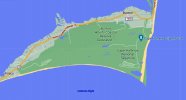I'm glad you said this, since motorcycling is a good example of 'it's all the operator's fault.' I know this because I'm a motorcycle safety instructor. While the probability of most m/c incidents can be mitigated to an extent by the rider, mechanical failures can and do happen, and can also be beyond the ability of the average rider to detect. You can't blame a rider, for example, for a sudden blowout caused by a sharp object that's all but invisible at highway speeds. But flying is different.That can happen. Every pilot of a Boeing that takes off knows that. He takes that responsibility. We should never blame the machine... i am a motorbiker: my biggest efforts go to correct errors other drivers make as well. Upto now i only had one accident and i was not enjured, apart from some blue spots on my hip and brest when i decided to jump off the motorbike when the car driver started to panic and freeze. If you crash against a bird, if your equipment is not maintained... i have nobody in my pilot environment who had an engine error, except in heavy rain where the battery got water (known problem) and fell out. He admitted as well he should not have taken off so... that he made an error as pilot. Weather conditions IS the responsibility of the pilots. Even tyre pressure on a motorbike and car is the ‘pilots’ responsibility, it is on the checklist and that is why i have PTMS on my vehicles as well (1% of motorbike/car incidents come from to low pressure on tyres followed by overheating or taking a sharp corner with too low pressure where the tyre looses all air suddenly or even explodes). Overpressure is hardly an issue. +je
- weather - yes it's our responsibility to check, but to think that there are weather events that can happen suddenly without warning is to be purposely ignorant of the things that can happen.
- 'if you crash against a bird?' That's gotta be willfully ignorant on your part. My Inspire 2 went down when a small bird flew through my right rear prop while it was stationary, filming an event. How on earth does anyone avoid that? Birds fly at US - we don't fly into a bird.
- you don't know any pilots who have had an engine error? Lucky for you and them. I've had a motor fail for no reason at all (per DJI; it just died mid-flight). Just because it hasn't happened to you doesn't mean it can't happen.
We, as pilots, do have to take every precaution and check everything we can to avoid issues. Many incidents can definitely be pinned on the pilot; I know I've had my share. But to say that every crash is the pilot's fault is blame-y and inaccurate.












